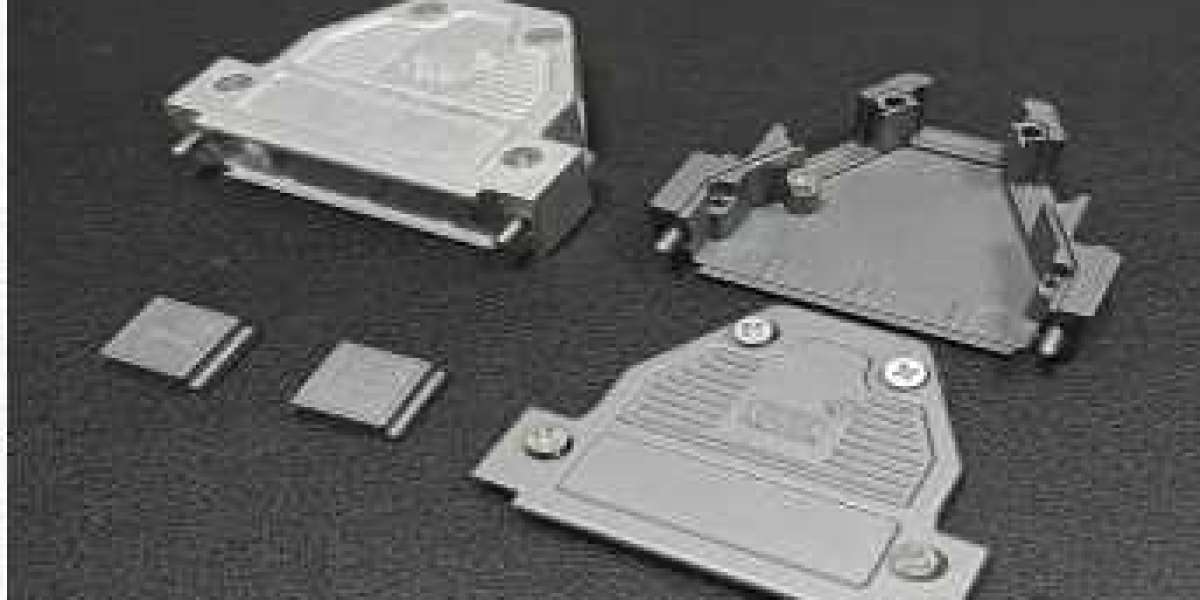Introduction to D-Sub Connectors
Breaking Down Barriers: The Versatility of D-Sub Connectors
In a world where connectivity is key, D-Sub connectors have proven to be the unsung heroes. These versatile and reliable electronic connectors have been quietly bridging the gap between devices for decades, enabling seamless communication across a wide range of industries.
But what exactly are D-Sub connectors? How have they evolved over time? And why are they still crucial in today's rapidly advancing technological landscape? Join us as we delve into the world of D-Sub connectors, uncovering their different types, common applications, and both advantages and limitations. Whether you're a tech enthusiast or simply curious about how your devices stay connected, this blog post will shed light on the incredible versatility that lies within these unassuming little connectors. So let's dive in!
The Evolution of D-Sub Connectors
Over the years, D-Sub connectors have undergone significant evolution to meet the changing needs of various industries. These connectors are widely used for their durability and versatility in connecting a range of devices.
Initially introduced in the 1950s, D-Sub connectors were primarily used in military applications. They quickly gained popularity due to their robust design and ability to handle high voltages and currents. As technology advanced, so did the capabilities of these connectors.
With each passing decade, improvements were made to enhance performance and functionality. The introduction of smaller form factors allowed for more compact designs without compromising on reliability. This opened up new possibilities across industries such as telecommunications, aerospace, automotive, and industrial automation.
One notable advancement was the transition from analog to digital signals. D-Sub connectors adapted by incorporating additional pins and shielding measures to ensure proper signal transmission without interference or data loss.
In recent years, advancements have focused on increasing data transfer rates. Higher-speed versions such as USB Type-C with Thunderbolt support have emerged, enabling faster connectivity for devices like computers, smartphones, and storage peripherals.
As demands continue to evolve rapidly in today's interconnected world, manufacturers are constantly researching innovative ways to further improve upon D-Sub connector technology. From increased pin count options to enhanced shielding techniques or even hybrid solutions that combine multiple connector types into one housing - there is no shortage of possibilities!
In conclusion (not a conclusion), the evolution of D-Sub connectors has been driven by a combination of industry demands and technological advancements. With their versatility and adaptability across various applications, it's clear that these reliable connectors will remain essential components for many years to come!
Different Types of D-Sub Connectors
When it comes to D-Sub connectors, there is no one-size-fits-all solution. These versatile connectors come in various types, each designed for specific applications and requirements. Let's explore some of the most common types of D-Sub connectors:
1. Standard D-Sub Connectors: The classic design that started it all, standard D-Sub connectors have pins arranged in two rows with varying pin counts. They are widely used in computer peripherals, audio/video equipment, and industrial automation.
2. High-Density D-Sub Connectors: These connectors pack more pins into a smaller footprint compared to standard ones. Ideal for space-constrained applications like telecommunications and aerospace industries.
3. Combination/Combo D-Sub Connectors: As the name suggests, these versatile connectors combine different connector types in a single housing. They allow for flexibility by accommodating multiple signals such as power, RS232 serial communication, coaxial contacts or even USB connections.
4. Filtered/EMI-RFI Shielded D-Sub Connectors: These specialized connectors incorporate filters or shielding mechanisms to protect against electromagnetic interference (EMI) and radio frequency interference (RFI). Commonly used in military communications systems and medical devices where signal integrity is crucial.
5. Waterproof/Marine-grade D-Sub Connectors: Designed specifically for harsh environments where moisture or water exposure is likely; these ruggedized connectors ensure reliable connectivity even when exposed to extreme conditions like marine or outdoor applications.
Common Uses and Applications
D-Sub connectors may seem like a small component, but their versatility allows them to be used in a wide range of applications. One common use for D-Sub connectors is in computer systems. They are often found on the back of desktop computers, where they connect peripherals such as keyboards, mice, and monitors.
In addition to computer systems, D-Sub connectors are also widely used in industrial applications. They are known for their robustness and ability to withstand harsh environments, making them ideal for connecting various equipment and devices in factories and manufacturing plants.
Another area where D-Sub connectors find application is telecommunications. They are commonly used to connect modems, routers, and other networking equipment. Their reliable performance ensures stable connections even under heavy data transfer loads.
The medical field also benefits from the versatility of D-Sub connectors. They can be found in various medical devices such as ultrasound machines and patient monitoring systems. The secure connections provided by D-Sub connectors ensure accurate transmission of vital patient information.
Moreover, automotive industries utilize these connectors due to their durability and resistance to vibrations. From engine control units to diagnostic tools, D-Sub connectors play a crucial role in automotive electronics.
With their adaptability across different sectors including aerospace, military technology,and audio/video equipment,D-subconnectors continue breaking barriers with their versatile usage capabilities.
Advantages and Limitations of D-Sub Connectors
D-Sub connectors offer numerous advantages that make them a popular choice in various industries. One of the primary benefits is their versatility. D-Sub connectors come in different sizes and configurations, allowing for flexibility in design and application.
Another advantage is their robustness and durability. These connectors are built to withstand harsh environments, making them suitable for use in industrial settings where reliability is crucial. They can resist vibration, shock, and temperature fluctuations, ensuring consistent performance even in demanding conditions.
Furthermore, D-Sub connectors provide excellent signal integrity due to the tight contact between pins and sockets. This enables reliable data transmission without interference or loss of signal quality.
Additionally, these connectors are relatively easy to install and repair. Their simple design allows for quick assembly and disassembly without requiring specialized tools or expertise.
Limitations of D-Sub Connectors Despite their many advantages, it's important to acknowledge the limitations of D-Sub connectors as well. One limitation is their size limitations compared to other types of connectors such as USB or HDMI. The larger size may not be suitable for devices with limited space or compact designs.
Moreover, D-sub connectors have a lower pin count compared to some modern connector options available today. In applications that require a high number of connections or advanced features like audio/video transmission, alternative connector options might be more appropriate.
Conclusion
D-Sub connectors have proven themselves to be versatile and reliable solutions for a wide range of applications. Their evolution over the years has resulted in various types that cater to different needs. From computers and telecommunications to industrial automation and military equipment, D-Sub connectors have found their place in countless industries.
The advantages of D-Sub connectors, such as their robustness, ease of use, and cost-effectiveness, make them a popular choice among engineers and manufacturers. They offer secure connections, excellent signal integrity, and can withstand harsh environmental conditions.
However, it's important to note that D-Sub connectors do have limitations. As technology advances with smaller form factors and higher data transmission rates, other connector options may be more suitable for certain applications. Nonetheless, D-Sub connectors continue to hold their own due to their versatility.
In conclusion, the flexibility of D-Sub connectors cannot be underestimated. With their ability to adapt across numerous industries and applications while maintaining reliability and performance standards, they remain an essential component in today's interconnected world. Whether you're looking for a connector solution for your computer peripherals or complex industrial systems like Junhong Signal Equipment, consider exploring the versatility offered by D-Sub connectors - a tried-and-tested option that continues to break down barriers!







